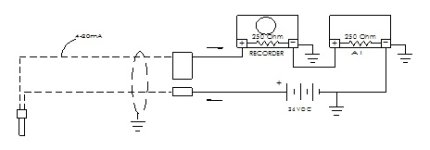Hi,
Is ground loop problem on multiple current analog signals depend on the hardware (i.e. PLC) or on the signal generator (i.e. pressure transmitter)?
I have had an application before that requires me to use 4-ch AD module (in that case Mitsubishi) connecting 2 0-10Vdc (inverter) & 2 4-20mA (auxilliary out of temp controller & motorized pressure regulator). I have no problem with connecting the Vin but upon connecting 2 Ain, alas I had error on both device. I searched on what might be the cause & found out due to ground loop.
Another application I did using 2 Ain (2 pressure transmitter) was with keyence. I connected 2 4-20mA on the AD module but no apparent problem occur (hmmmm).
This leads me to ask the above question. Please help!
Is ground loop problem on multiple current analog signals depend on the hardware (i.e. PLC) or on the signal generator (i.e. pressure transmitter)?
I have had an application before that requires me to use 4-ch AD module (in that case Mitsubishi) connecting 2 0-10Vdc (inverter) & 2 4-20mA (auxilliary out of temp controller & motorized pressure regulator). I have no problem with connecting the Vin but upon connecting 2 Ain, alas I had error on both device. I searched on what might be the cause & found out due to ground loop.
Another application I did using 2 Ain (2 pressure transmitter) was with keyence. I connected 2 4-20mA on the AD module but no apparent problem occur (hmmmm).
This leads me to ask the above question. Please help!








